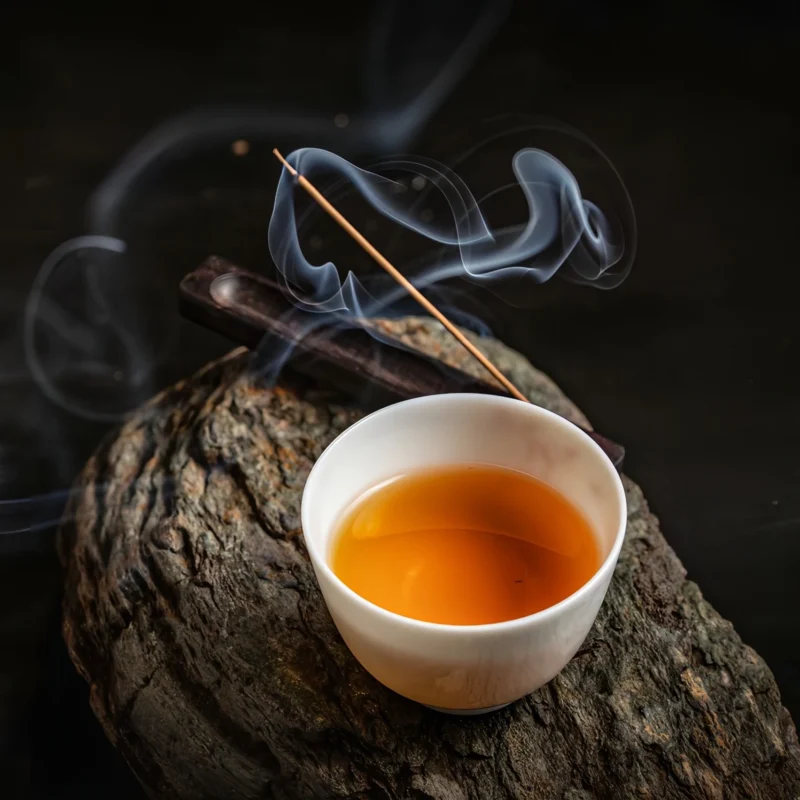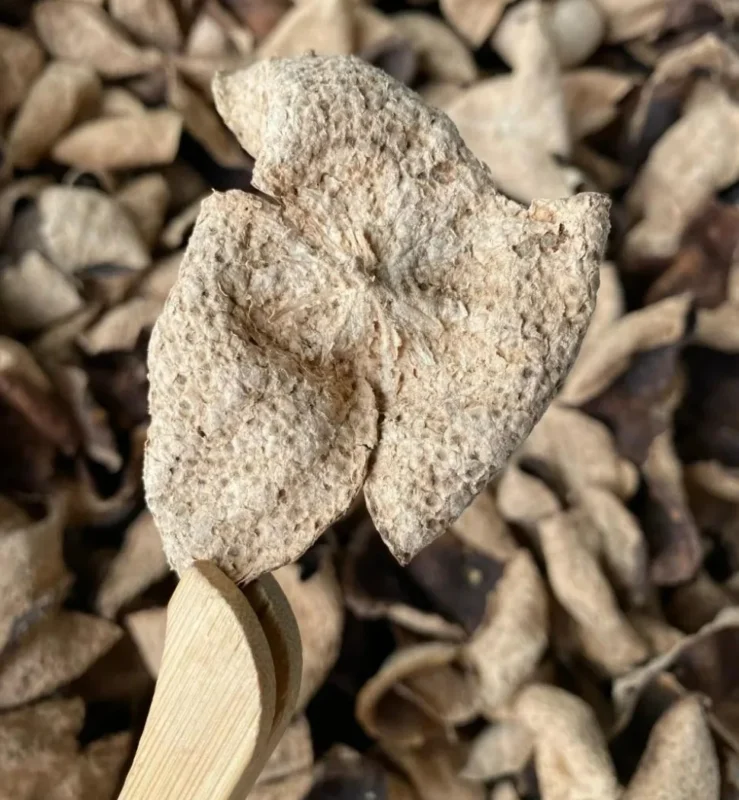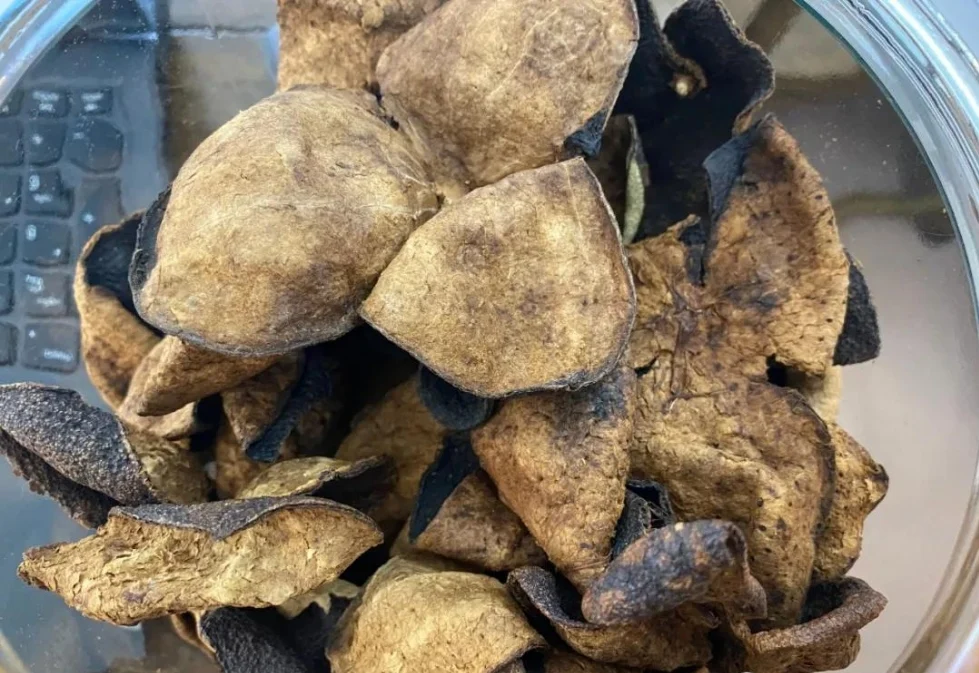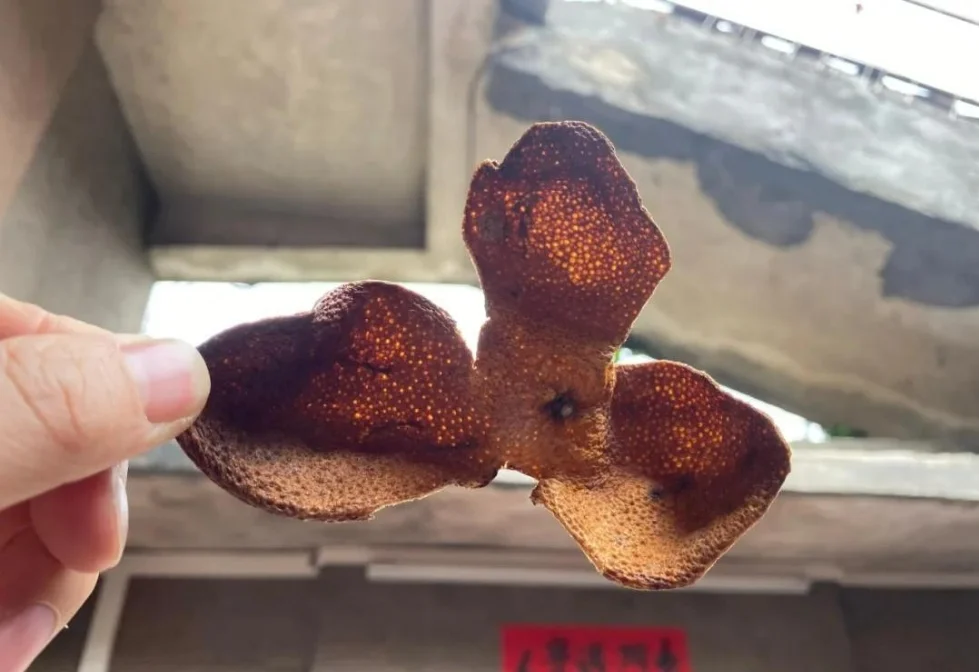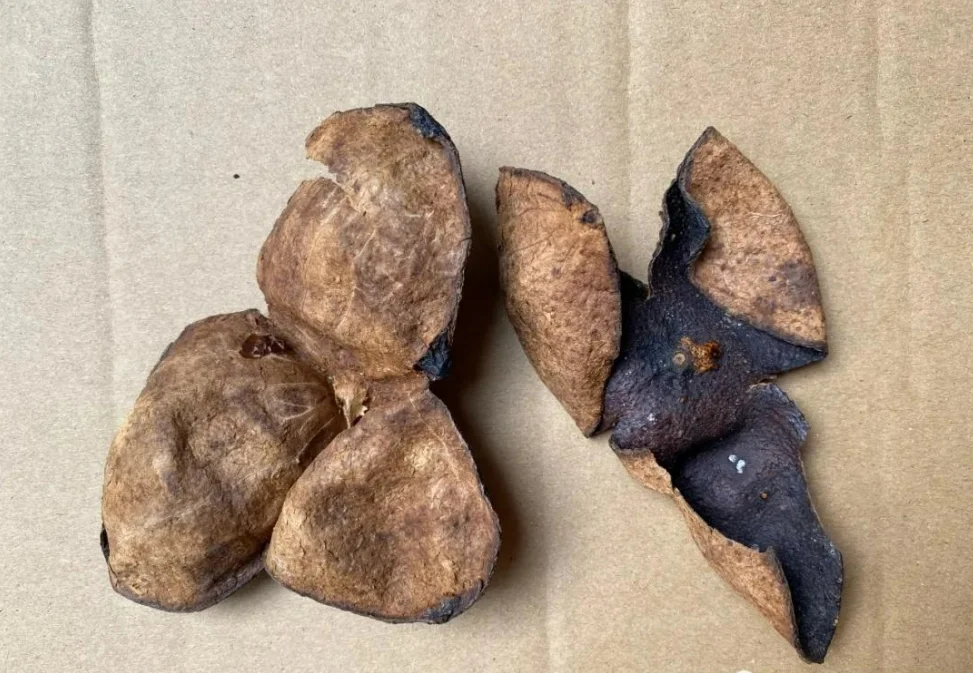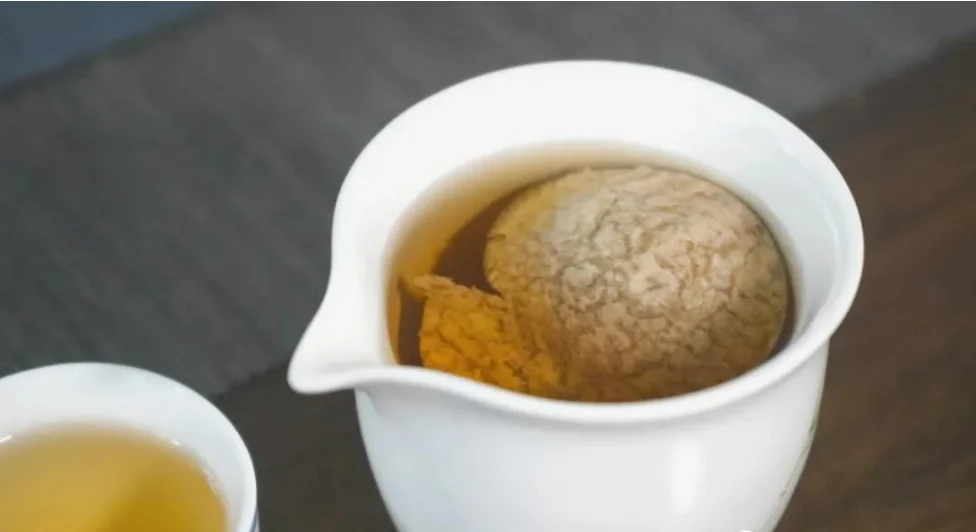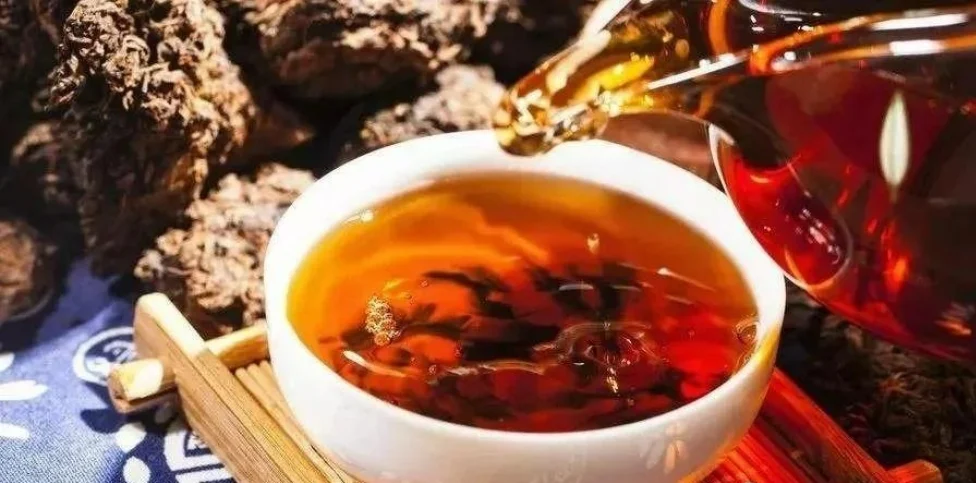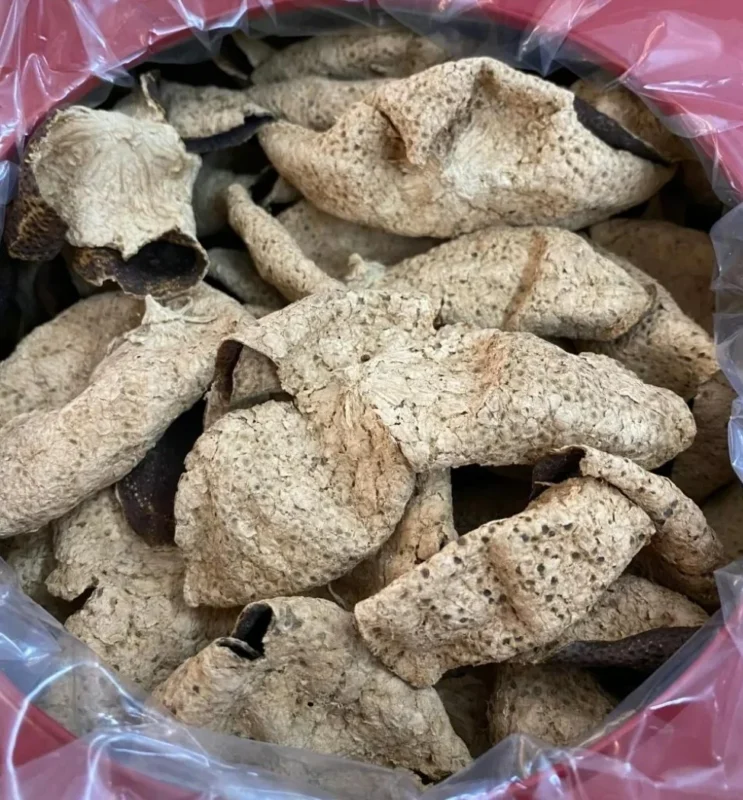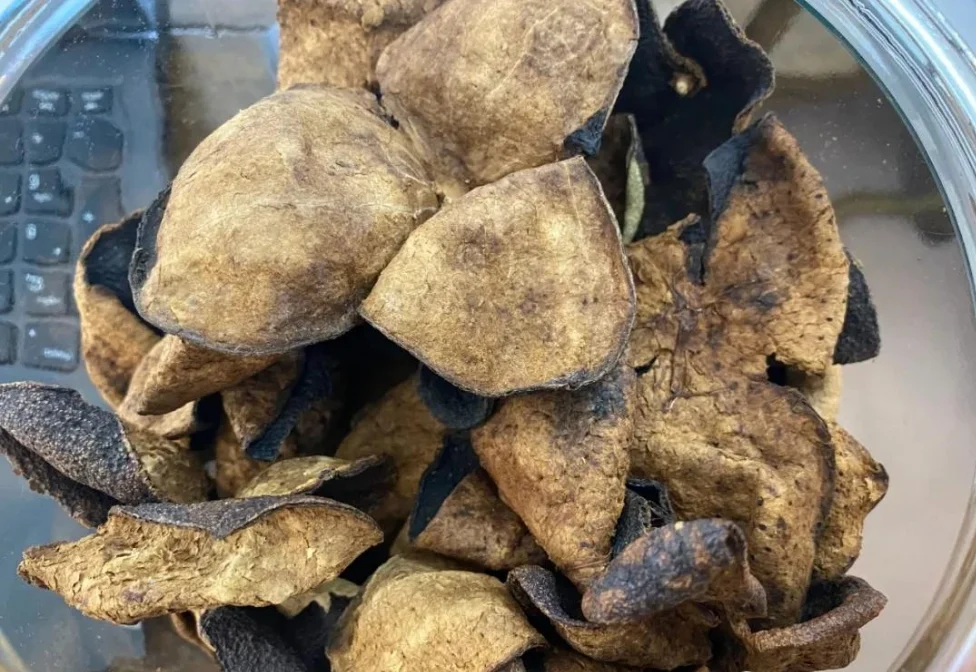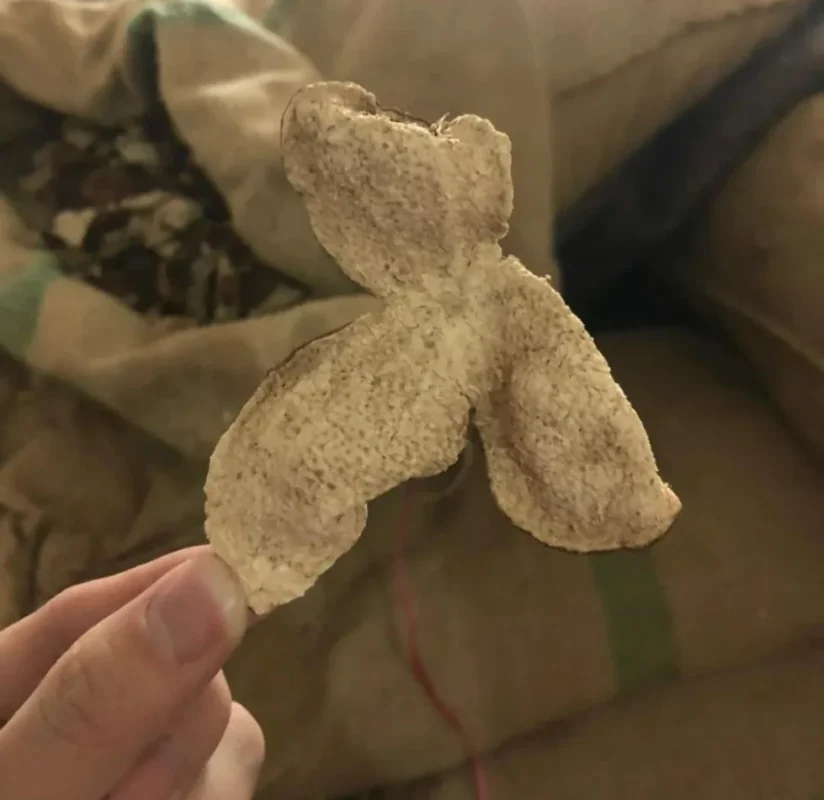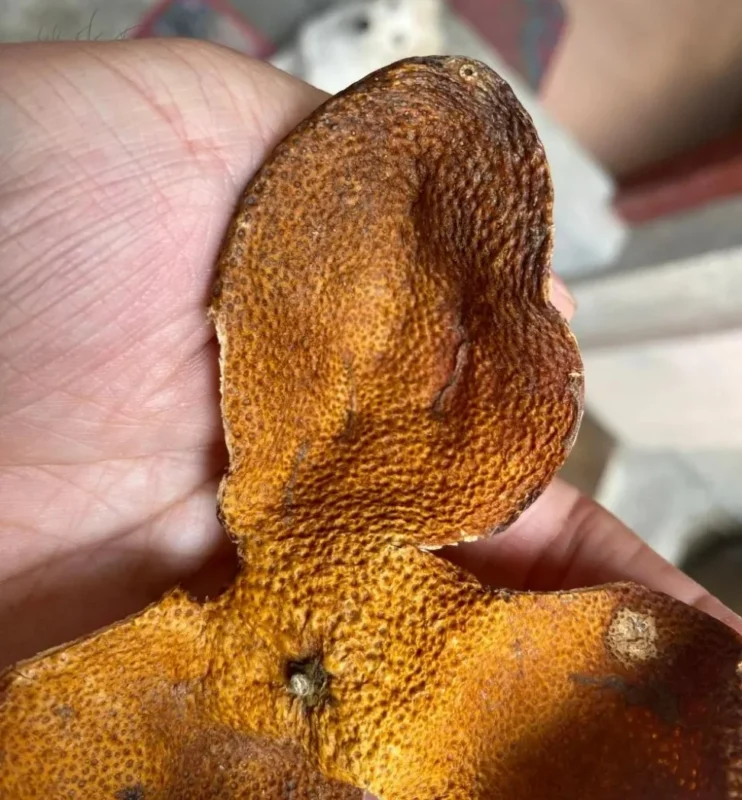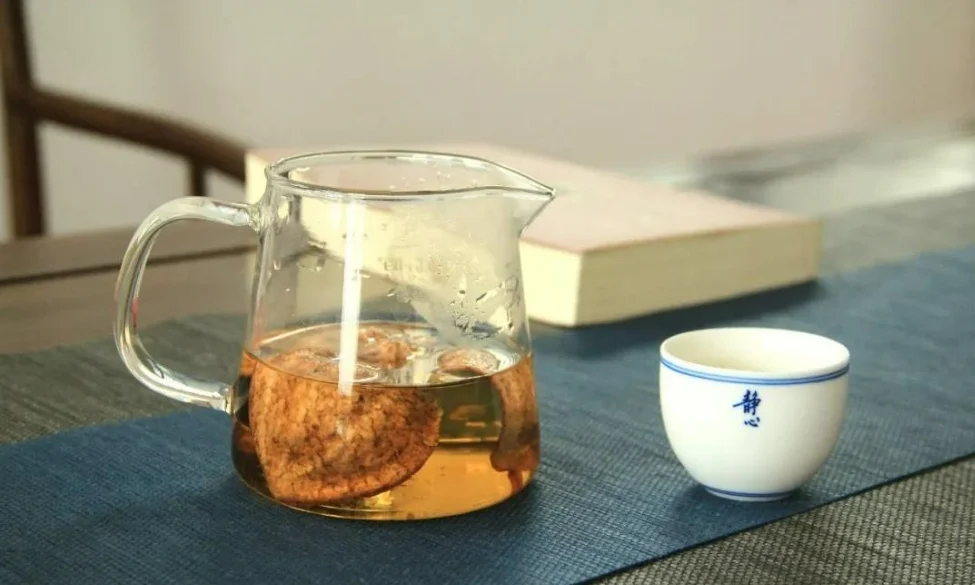How to identify authentic
1、Check the color
XinHui Chenpi↑↑↑↑↑
Xinhui Chenpi:
For newer Xinhui Chenpi, the inner surface is yellow-white or snow-white, and the outer surface is bright red or dark red, with noticeable “pig’s whisker” marks. Older Chenpi will have the inner membrane naturally weathered and peeled off, with both the inner and outer surfaces turning brown or even black, with prominent “pig’s whisker” marks. The “pig’s whisker” marks are clearly visible.
The peel of the tea branch mandarin (used for making Chenpi) always shows these marks, but even if it’s from the same tea branch mandarin variety, the “pig’s whisker” marks will appear when grown outside Xinhui. Chenpi with these marks is not necessarily authentic Xinhui Chenpi, but Chenpi without these marks is definitely not Xinhui Chenpi.
Authentic Xinhui Chenpi, no matter how aged, always has a clean, glossy, and transparent appearance with clear and shiny textures. Purely dried Chenpi from dry storage appears brownish, shriveled, with cracked, tortoise-like patterns, soft texture, and a shiny gloss. Chenpi stored in a humid environment tends to have a dull color and more even tones.
Other Chenpi↑↑↑↑
Chenpi from different regions outside of Xinhui varies in color, ranging from yellow, red, to green, with shades that can be light or dark. The inner membrane is smooth and lacks the natural peeling that occurs with aging, and the wrinkles are uneven.
2、Check the oil cells
Xinhui Chenpi Oil Cells↑↑↑↑
Authentic Xinhui Chenpi features numerous oil dots on its surface, arranged in a regular, tightly connected, and evenly distributed pattern. These oil dots are concave and, when held up to the light, the oil cells are clearly visible with a noticeable texture. The oil cells form a distinct contrast with the raised patterns of the surrounding lines, enhancing the visual and tactile feel of the Chenpi.
Other Chenpi↑↑↑↑
The oil dots on Chenpi from other regions are unevenly distributed, with fewer dots overall. The size of the oil dots is inconsistent, and they do not have the regularity or uniformity seen in authentic Xinhui Chenpi.
3、Check the Tea Color
Other chenpi↑↑↑↑
The tea color will vary depending on the maturity of the Chenpi used. Younger Chenpi produces a lighter tea color, while more mature Chenpi results in a deeper, richer hue. However, if dyed or artificially processed Chenpi is used, the tea color can be unusually dark, resembling the deep color of brewed Pu-erh tea.
Ten-Year-Old Aged Chenpi↑↑↑↑
Xinhui Chenpi contains the most varied types of volatile oils, giving it a unique aroma that changes with age and develops distinct layers of fragrance. The scent is complex and multifaceted.
-
3-8 years old: Fresh Xinhui Chenpi has a sharp, fruity fragrance.
-
9-20 years old: The aroma becomes more delicate and fragrant, without any sour or sweet notes.
-
20-40 years old: The scent turns rich and mellow, with a deep, aged fragrance.
-
50+ years old: Xinhui Chenpi over 50 years is a rare treasure. Its aroma carries medicinal notes, the smell of old herbs, and a smooth, aged fragrance, giving it an exceptional and profound depth.
Other Chenpi – Pungent Chemical Odor↑↑↑↑
Chenpi from other regions typically has fewer types of volatile oils compared to Xinhui Chenpi, resulting in a much weaker aroma. The fragrance is often one-dimensional, with either sweet, sour, bitter, or astringent notes, and the changes in aroma with aging are not as significant. In some cases, there may be a strong, pungent chemical smell, which could indicate poor processing or improper drying techniques.
5、Check the Texture
Authentic Chenpi – No Artificial Aging Xinhui Chenpi↑↑↑↑
Time grants Xinhui Chenpi its unique texture. The texture of Xinhui Chenpi is light and firm. During the rainy season, when you touch authentic Xinhui Chenpi, you’ll notice that younger Chenpi has a softer feel, while older Chenpi becomes firmer to the touch and may easily crack or break apart. The longer the aging, the more brittle and harder the peel becomes, showcasing the effects of natural aging over time.
Other Chenpi:
The peel is hard and brittle, making it easy to break or crack. Unlike authentic.
6、Scrape the Surface
Xinhui Chenpi – Visible Oil Cells on the Surface↑↑↑↑
When you gently scrape the surface of Xinhui Chenpi with your nail, the scraped area will show a noticeable oily sheen. Younger Chenpi has more visible oil, while older Chenpi has a slightly reduced oil sheen. In contrast, other Chenpi typically has fewer oil cells and lacks the oily, smooth feel. When you lightly scrape the surface of other Chenpi with your finger, no noticeable oil sheen will appear.
7、Taste the Flavor
xinhui chenpi↑↑↑↑
Xinhui Chenpi – Flavor Profile with Age
Younger Xinhui Chenpi has a slightly bitter, sour, and astringent taste. As it ages, Xinhui Chenpi develops a sweeter, more fragrant, mellow, and aged flavor.
Other Chenpi does not experience significant changes in flavor with age. The taste of most Chenpi from other regions tends to be one-dimensional, either bitter, sour, or astringent, lacking the complexity and depth of flavor that comes with aging.
link:
Buy Authentic Xinhui Chenpi
How to Brew Chenpi Tea
